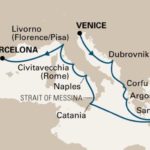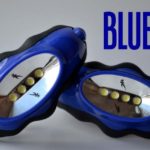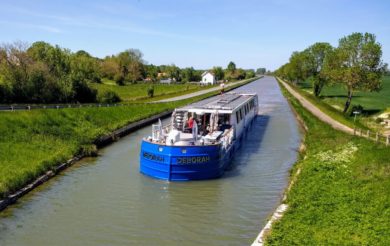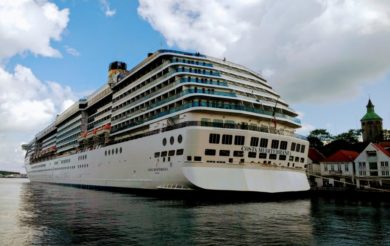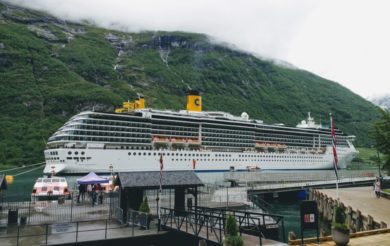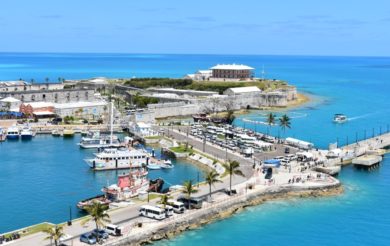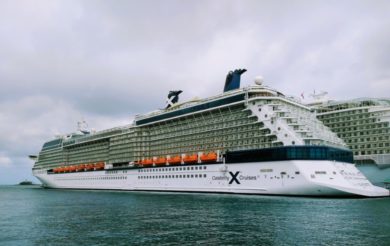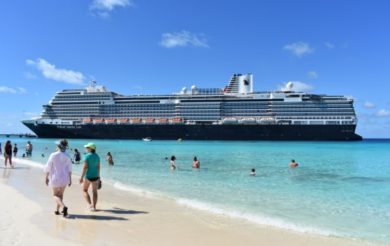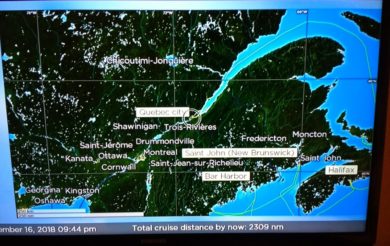Rock Fishing in Chesapeake Bay
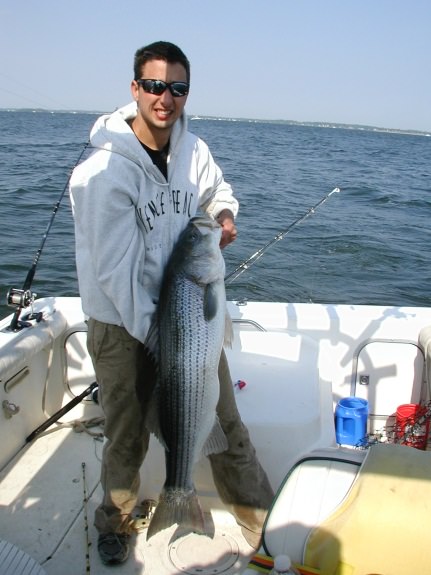
Rock Fishing in Chesapeake Bay
Rock Fishing in Chesapeake Bay
If you fish, you should consider Rock Fishing in the Chesapeake Bay!
By Dan Dudek
When someone asks if you want to go fishing for “rocks”, how do you respond? A second cousin who I only see on rare occasions asked me this question.
I never was much on fishing. Even for the four or five years my wife and I owned a fish and ski boat we went fishing only three or four times. I do remember catching at least two fish while we had the boat. The fish were largemouth bass… and they were huge! (almost a foot long)
With my “extensive” fishing background you can image I was not sure how to answer the question from my cousin regarding spending the day on the Chesapeake Bay fishing for “rocks.” I knew that by “rocks” he meant rock fish – which are also called striped Bass or just stripers. How much larger these striped bass would be as compared to the largemouth bass I had caught previously was something I did not know. I had heard about “stripers” and had remembered that it was a big deal sometime in the past when Maryland authorities put a ban on catching them for a couple of seasons.
My cousin’s enthusiasm about rock fishing conveyed to me that he was offering something very worthwhile and a lot of fun. So I quickly accepted his gracious offer (I am always up for trying new adventures). I then suggested we plan to do the fishing when I return to the Baltimore area in July. Thinking ahead, I knew that July was usually a good month to get crabs so I might as well combine a trip to Baltimore with fishing and eating crabs. My cousin Tom explained that we had to plan the trip during the “season”, which this year was from mid-April to mid-May.
Confused I told Tom that I thought the Bay had fish in it all year, including the bass we were supposed to be going after. Tom explained that the “trophy” fish migrated and it was only a few weeks each year that were the “season” for catching them. Then he explained some of the regulations, including that each person was limited to catching one fish per day. He also mentioned that I would have to meet him at his house at 4:00 or 5:00 a.m. the day we go fishing. At this point I started to think I had made a mistake in agreeing to go rock fishing. It seemed like a lot of effort to catch one fish. However, I did not let on that I was starting to second guess my decision. I just smiled and said how much I was looking forward to our adventure.
The next week back home in North Carolina, Tom emailed me a picture of the last rock fish he had caught. I was shocked! The fish was not just big, it was a monster! I emailed this picture to my nephew (who fishes the bay) and told him to look at this thing. He replied, “yeah, that is an average size rock fish.” My enthusiasm for the fishing trip skyrocketed!
I had to arrive at my cousin’s place by 5:00 a.m. I am not sure even now as to why such an early hour, but you do not question such things from those that are providing you with a once-in-a-lifetime opportunity to catch trophy rock fish. I got to Tom’s house at 4:45 a.m. and helped carry the required items from the house down the pier to the boat. I made several trips carrying two rods at a time.
As a complete novice at this type of fishing many things confused me. For example, why did we need a dozen rods for only the three of us? Why did Tom want to load “umbrellas”? He had just asked me to carry a couple of “umbrellas” out to the boat. The forecast did not indicate rain, but if they wanted me to carry umbrellas I would be happy to put them on the boat. As I quickly learned the contraptions I was given were very different types of umbrellas; they were special fishing rigs that consisted of about four simulated fish plus a “wounded” fish to the rear. The “wounded fish” was the only one with a hook. The ones in front were to simulate a school of fish. They used a lot of rods to cover a lot of territory while “trolling”; a type of fishing I had never experienced.
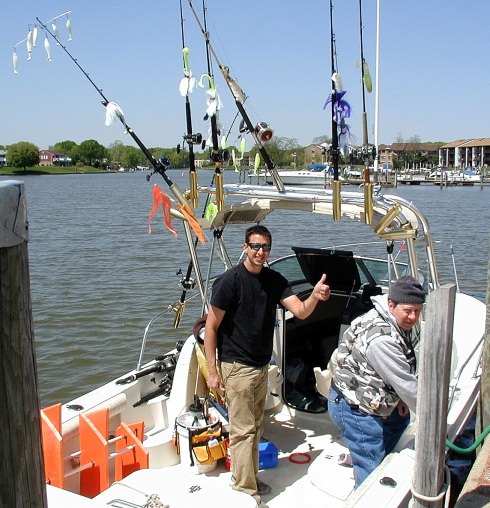
Our fishing boat. Notice rods with the “umbrella” rigs attached; and notice the Planer Boards in the lower left side of the picture.
We also loaded two homemade planer boards to allow us to troll with 12 rods. Planer boards are about two feet long and are constructed such that once in the water they remain about even with the stern when pulled. This allowed us to attach about 50 foot of line to a board on each side, giving a large “trolling area” behind our boat. When a fish takes the lure the rod line that is attached to the planer board’s line is quickly disconnected (it is basically clipped on to allow a fast release). The rod line is moved over or under the other lines and the attached rod is placed in a belt holder of the person responsible for landing the fish. This person then jumps into the “chair” at the stern of the boat and harnesses him/herself to the chair.
Depending on the fish’s temperament, how much it chooses to “run” and your strength it can take 10 to 15 minutes to get the fish to the boat. Once at the side of the boat a large net must be used to actually haul the fish into the boat. To keep the meat fresh you place the fish in a storage bin and cover it with ice.
The Chesapeake Bay Bridge area of the bay was our target fishing area and our objective was to catch the limit – one fish per person. Once we got the planer boards positioned, the umbrella rigs attached to all 12 rods and the rod lines attached to the line leading to the planer boards – we were ready to start trolling. After trolling a ½ hour the first fish struck. As the guest I was allowed to jump into the “chair” as the others unclipped the line and handed me the rod. After about a good 15 minute struggle I finally got the fish next to the boat, where it was hauled in and put on ice. A 36-inch fish – by far the largest fish I have ever caught. A true highlight of my life!
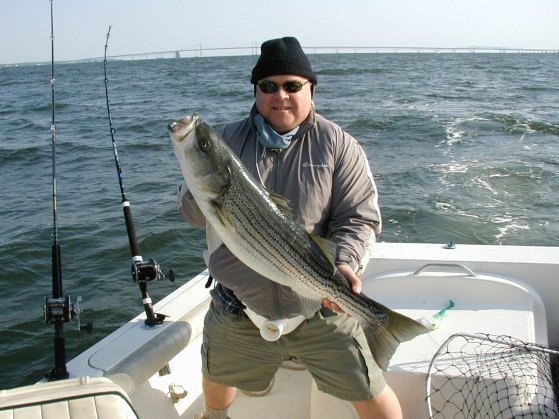
Dan catches his first ever rock fish. Notice the Chesapeake Bay Bridge in the background.
A ½ hour later we got another fish. This one was even larger – a 40 incher. After another ½ hour we got the third (and our limit) – this fish was a monster at 42 inches!
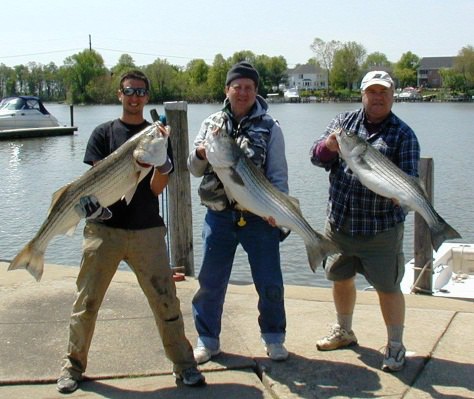
Our harvest of rock fish!
This hugely successful Rock Fishing trip will be remembered for a long time. If you ever have a chance to “fish for rocks”, do it! You will not be sorry!
By the way, after you clean and filet your harvest, one tip is to slice the meat into meal size portions and place each portion in a plastic container. Then fill the container with water and freeze it. This allows you to keep the meat frozen for up to a year without the meat getting freezer burn.
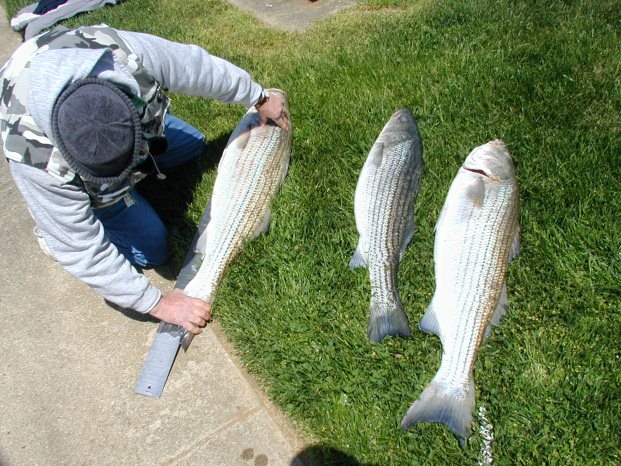
Fishing for Rock Fish in Chesapeake Bay
If You Go:
Note: There are numerous rock fishing charters available during the season at numerous locations in the mid to southern Bay region. These charters typically supply everything you need, i.e. rods, rigs, ice, etc. All you need to bring is some food and drinks. The charters generally have a “boat license” that covers those fishing.
Bio:
Dan Dudek has travelled extensively domestically and internationally, has been to most U.S. states and Canadian provinces and about 30 countries.
In his business career Dan had the opportunity to spend weeks on assignment in many overseas locations and has learned to observe the “frame of reference” others have of culture and political ideologies. He has a private pilot’s license (now inactive), and as an Eagle Scout, he practices the scout motto to “Be Prepared” for all situations and confesses to being a person who likes “electronic toys”, especially those security related.




